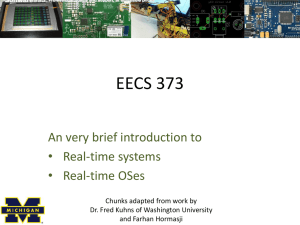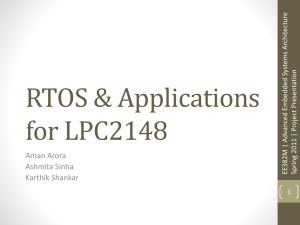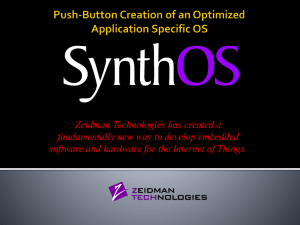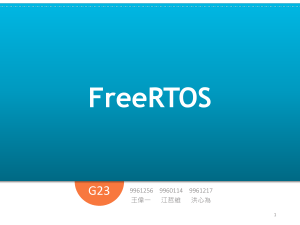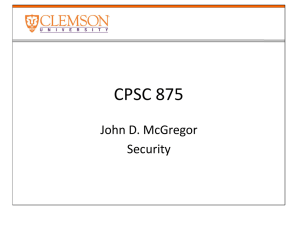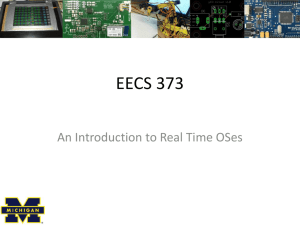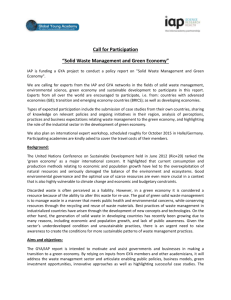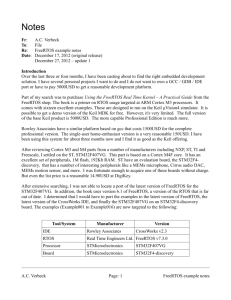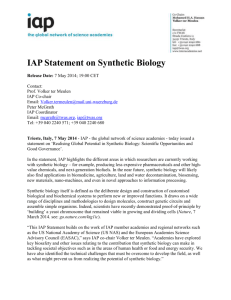Project Presentation
advertisement
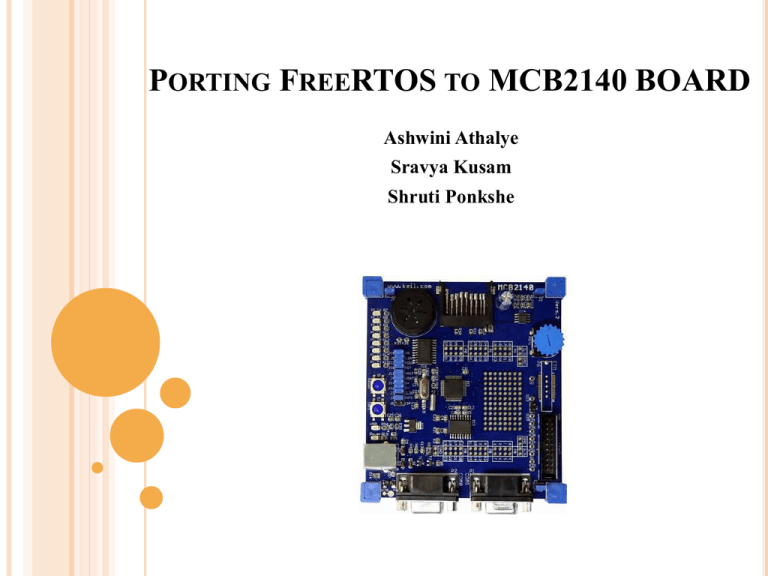
PORTING FREERTOS TO MCB2140 BOARD Ashwini Athalye Sravya Kusam Shruti Ponkshe OVERVIEW Introduction to RTOS FreeRTOS Internals Hardware/Software Details Implementation Breakdown of work Design Tradeoffs What would we have done differently Goal: To port FreeRTOS v5.3.0 onto ARM7 MCB2140 board WHAT IS AN RTOS? A multi-tasking operating system catered for real-time applications Eg Flight control, streaming media decoders, microwave etc What is the difference between a general OS and RTOS? RTOS: Deterministic “timing” General OS: Non-Deterministic “timing” OS services consume only known and expected amount of time Services can inject random delays and hence alter execution times Key kernel component Scheduler and scheduling policy FREERTOS INTERNALS: BASIC BLOCKS Scheduler Scheduling Policy: Pre-emptive, priority based RTOS Tick: Timer Interrupt to measure time in ticks Idle task of lowest priority(0) created by scheduler Tasks Context: Each task executes within its own context (stack) Priority: Processing time preference given to higher priority task State: Queues Running: Currently Executing Ready: Able to execute but higher/equal priority task running Blocked: Waiting for temporal or external event (delay, semaphore) Suspended: Explicitly suspended by scheduler Inter-task and interrupt-task communication Co-routines Share single stack, implemented as idle hooks (lowest priority) FREERTOS INTERNALS: CONTEXT SWITCHING Saving context The context can be saved by pushing processor registers onto the task stack. Push R0-LR Push CSPR Copy stack pointer in kernel Restoring context The scheduler retrieves the stack pointer for the task then POP's the context back into the correct processor registers MCB2140 BOARD DETAILS (NXP LPC2148) DEVELOPMENT ENVIRONMENT Keil Development Tools uVision v4.0 IDE ARM compilation tools ARM C/C++ compiler (armcc) ARM Macro Assembler (armasm) ARM Linker (armLink) Flash Magic Developed for NXP semiconductors to program on-chip flash PORTING METHODOLOGY Identify source code for closely related port Identify development environment LPC 21xx port for MCB 2100 board MCB2140 manufactured by Keil Study source code organization Port-dependent Port-independent Successful compilation = nth attempt Testing Allocate appropriate stack size, priority Compile code Config file: Processor frequency, stack direction and size, tick rate etc. Task creation Task, queues, co-routines Make hardware related changes Tick timer, ISR handling, Context switching Single task Multiple tasks Co-routines Debugging Emulator, JTAG Printf : requires UART to be setup APPLICATION DEVELOPMENT Implemented Monitor(as a task) to perform IAP IAP = In Application Programming Performing erase and write operation on the on-chip flash memory from the application code IAP routine resides at 0x7FFFFFF0h, thumb code IAP commands Blank check sectors Erase sectors Prepare sectors for write Copy RAM to Flash Compare DEMO! BREAKDOWN OF WORK Common Understanding source code Understanding Interrupts, serial port configuration Sravya Task and co-routine implementation Understanding IAP vs ISP Shruti Understanding/Setting up board IAP code Ashwini Compiling code UART configuration and Monitor code DESIGN TRADEOFFS Monitor can spawn IAP as a separate task More complicated scheduling policy WHAT WOULD WE DO DIFFERENTLY Debugging: Use JTAG, understand emulator Application: Design application for “Hard” real time task POINTS TOGO RTOS design and porting Simplify Code Embedding ASM in C In-built functions may not work correctly compiler dependent syntax We wrote our own functions- isdigit(), isspace() etc Flash organization, sector layout REFERENCES www.freeRTOS.org www.wikipedia.com ARM Assembly Language Programming Guide LPC2148 Manual QUESTIONS
